Megan Mosby
Executive Director
It is the time of year for me to remember things that I am thankful for…well, actually, I do this more often than annually as I am constantly reminded about how fortunate I am….but it ‘tis the season so here goes…in no particular order knowing that the list might be different on any given day.
Today, I am thankful for:
- My family, which obviously includes pets.
- The staff and volunteers at Liberty Wildlife for helping to make our mission a successful reality.
- For the donors and caring public who fulfill their necessary piece of the puzzle to make the picture whole and possible.
- For the folks that come and go in life, imparting needed and welcomed richness.
- For remembering and for looking forward and for awareness in the present moment with all the challenges to overcome and the joys to exhilarate in.
- For people WHO DO NOT use sticky traps or pesticides…enough said, but if you want more information…ask me.
- For people who have figured out how to conserve resources.
- For people who take the time to create habitat for wildlife neighbors.
- For people who have learned to live life in a balance.
- For people who live life respectfully of others with whom we share this planet.
- For people who live harmoniously and consciously with nature.
- For people who respect, embrace, and don’t fear differences.
- For the ability to gather again safely.
- For the resiliency of nature.
- For the scruples and morals that I was raised to have and the strength to be true to them.
Check with me later and the list might have morphed. That is why it is fun to be aware of the things we each have to be thankful for. Once this thankful energy is flowing, you might be surprised about what comes up. As you might see, the negatives begin to erode when a light shines on the positive.
So, this Thanksgiving Day ask the folks you come into contact with what it is that they are thankful for. You may see both their list and your own expand, and hopefully so. I am pretty sure I will add to my list. Let me know what you learn.
![]()
This Week @ Liberty – November 23, 2021
Thanksgiving is upon us and Christmas will be right around the corner. Every new arrival is another record for intakes and we still have December to go. We have lots for which to be thankful. I am told that Wishes for Wildlife 2021 was another success so I guess we’re getting pretty good at this virtual stuff. The one thing we will never be able to do via ZOOM! is care for the birds and animals that arrive at our facility. Thankfully we now have at least three vets who generously donate their time and skill, so there’s more than one day when we have a doctor on duty. This decreases the ‘waiting time’ an animal would have to wait for specialized care beyond triage. We have been approved to keep the two non-releasable California condors in our care and are currently building a special enclosure for them. This will allow us to have a blood donor when the need for a transfusion arises. I have periodically been asked if I thought the animals know we are helping them and if they seem grateful. The question remains unanswered, but I am grateful that I have been given the opportunity to help them in some small way, and that I was permitted to be a part of this organization for over thirty years. I believe Liberty Wildlife will continue to soar into the future, for which I am supremely thankful!
Water birds
Despite the fact that Phoenix is in the middle of a desert, there are a plethora of lakes and canals crisscrossing our fine state. If there is a downside to having so much water around us is that a lot of it is man-made and whatever isn’t used for agriculture is used for recreation. Fishing, boating, and just being close to water is sometimes problematic when it comes to animals that, surprising as it may seem, also find water attractive for a variety of reasons. Ducks, herons, cormorants, even pelicans make their homes in our lakes and ponds. We even have a beaver that periodically shows up in the Rio Salado when the rains bring the levels up. When people don’t take care to clean up after themselves around water, the birds and animals often suffer as a consequence. Fishing line, plastic bags of all types, discarded food containers all have brought birds to our door for rescuing. Dogs are often allowed to run unleashed around water and sometimes unmonitored children will assault wildlife with gleeful abandon.
The little mallard that came in presented a wing injury. X-rays showed he has a dislocated shoulder that hopefully will heal after being wrapped properly. The great blue heron has no obvious trauma and will be observed and fed until he appears able to survive in his natural habitat.
(Look for 5 pictures.)
Barn Owl
Arizona is lucky to have thirteen species of owls residing locally. Most of them are small, but besides the great horned owl, the other larger type is the common barn owl. Recently we accepted a ‘barnie’ as a patient with an unspecified wing injury. He was being treated and underwent another evaluation last week. While giving him an injection of medicine, it was noticed he had an air sac protruding from his elbow. Birds have a very interesting breathing system which is much more complex than our own. We are “liquid cooled” machines – when we get hot or stressed, we perspire. Birds need a lighter system to maintain temperature control and they get this by not only having their lungs transfer heat, but a subsystem of air sacs that wrap around the major muscles and organs of their bodies. These inflate with each inhalation and since they are a thin membrane, allow heat to be transferred. With every breath a bird takes, only 25% of the air taken in is used for oxygen, the other 75% being used for cooling! There are even air sacs in some places in their wings, which is what they saw sticking out of the barn owl’s wing. Not a serious injury in this case, but not something we see every day.
(Look for 3 pictures)
Great horned owl
We get in literally hundreds of great horned owls each year presenting a variety of injuries. The severity of the damage runs the gamut from gunshots to fence impalements to electrocutions to automobile collisions. Last week we admitted a great horned owl as a patient that presented no obvious trauma but seemed unreactive to external stimuli. At first, Jan suspected he might be blind, but he appeared to be able to find the perches offered to him in his enclosures. His eyes were checked and they seemed to react normally so he was test flown in a flight enclosure. His flying ability was satisfactory in this test so he was allowed to remain outside under observation. He will continue to be evaluated to see if he will be a candidate for release or will be considered for alternative outcomes such as foster dad or even education.
(Look for 3 pictures)
Sharp shinned hawk
A pretty little sharp shinned hawk has been with us for a couple of weeks. He came in presenting a wing injury which, after x-rays, was treated with a wrap followed by cage rest. Last week the wrap was removed and some physical therapy was accomplished by Tori and Lora to improve the mobility of his injured wing. Sharp shinned hawks, like their larger cousins, Cooper’s hawks, make their living by hunting other birds on the wing. This demands some extraordinary flying skills which, if compromised, could be problematic. Although some people think ill of these accipiters because they kill smaller “songbirds” inhabiting their bird feeders, these predators ultimately contribute greatly to the health of the entire flock. Predator and prey are alternate sides of the same coin in the game of life in the backyard bird world.
(Look for 4 pictures)
Prairie Falcon
Recently we got in a prairie falcon from our friend in Havasu City. The bird presented a hole of unknown origin in its cranium. One might suspect a gunshot as the origin of this type of injury, but no pellet or exit wound was found, so it will probably remain a mystery how he got injured. Prairie falcons are similar in size to the peregrine falcon, which also inhabits a large portion of the western US. But where peregrines are primarily avian specialists, mainly hunting other birds, the Prairie falcon will be looking for small mammals on the ground. They are very energetic birds with a piercing cry, though this individual remained silent during his treatment. Dr. Salhuana worked diligently on cleaning the wound and bandaging it with various high tech dressings so we’re hoping the aperture will granulate in and the bird will eventually heal.
(Look for 6 pictures)
OLIO
We are proud to present some of our birds each month at the Verde Canyon Rail Road. Last week the weather was absolutely perfect and the crowd was great!
(Look for 1 photo)
The Way We Were…
Some things haven’t changed much…
Joe and Jan working with eagles…
Megan preparing to release a great horned owl…
The Education meetings have matured somewhat…
The Daily Care volunteers still maintain their sense of humor!
(Look for 4 photo)
Leave a Reply
Want to join the discussion?Feel free to contribute!
Leave a Reply
Posted by Terry Stevens,
Liberty Wildlife Volunteer



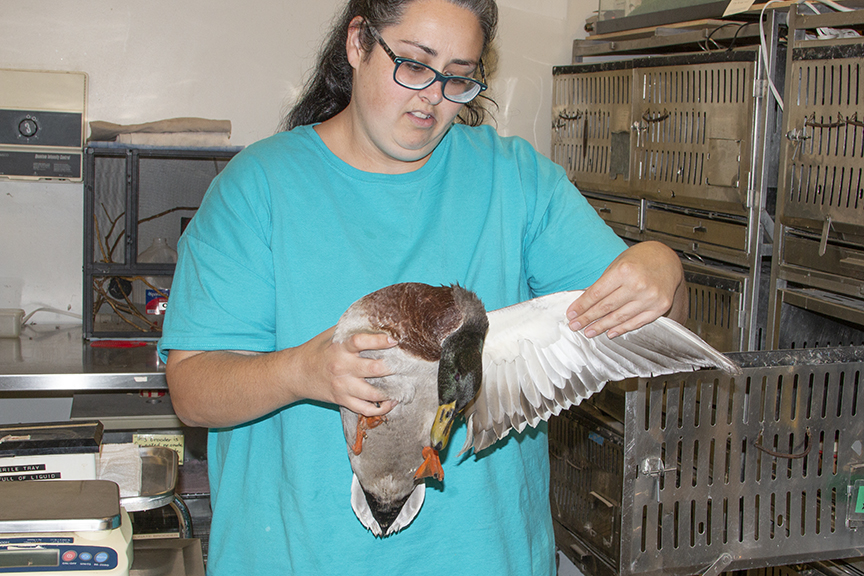
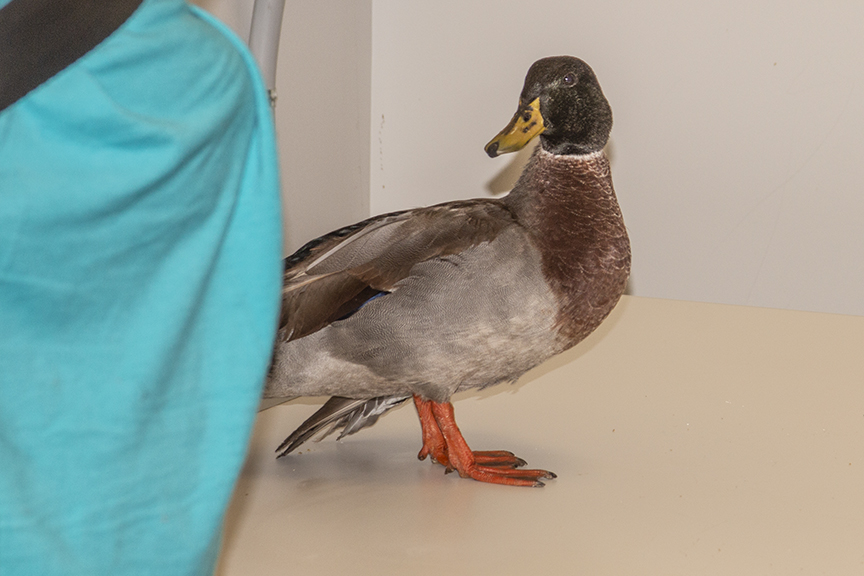

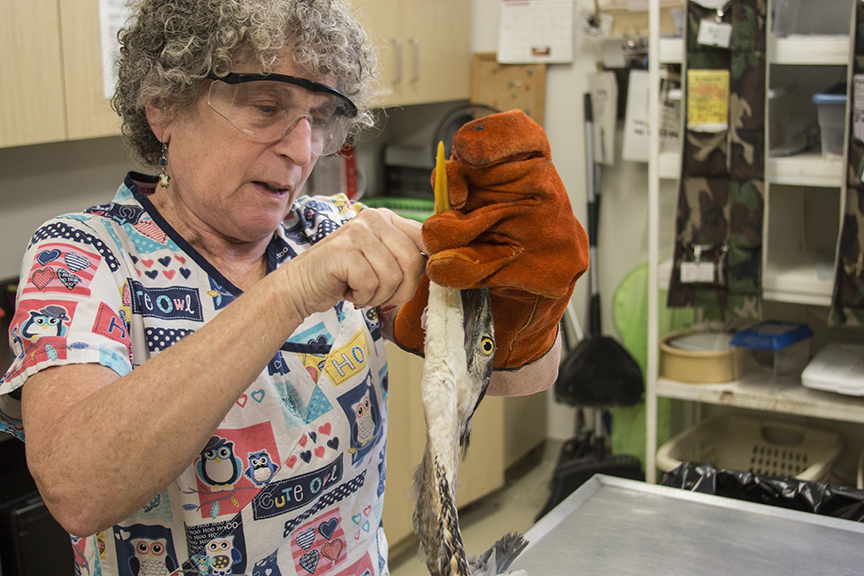
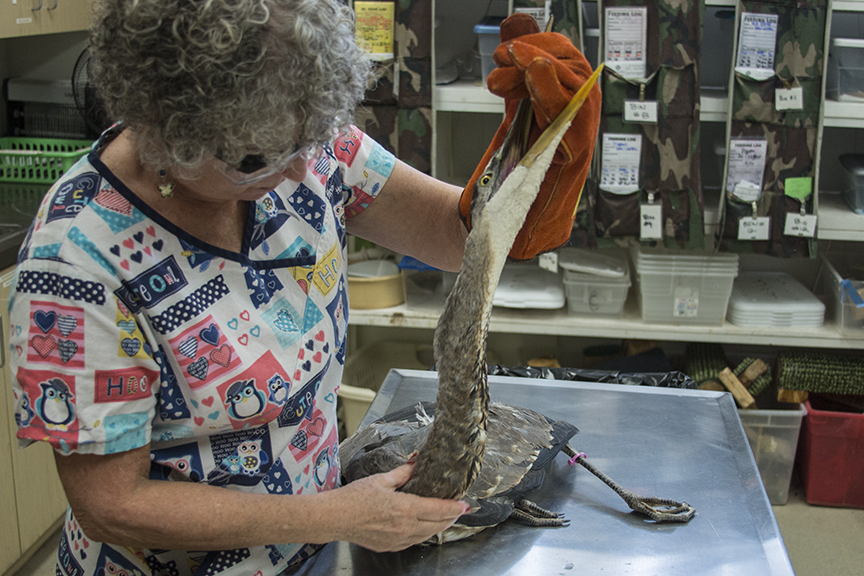
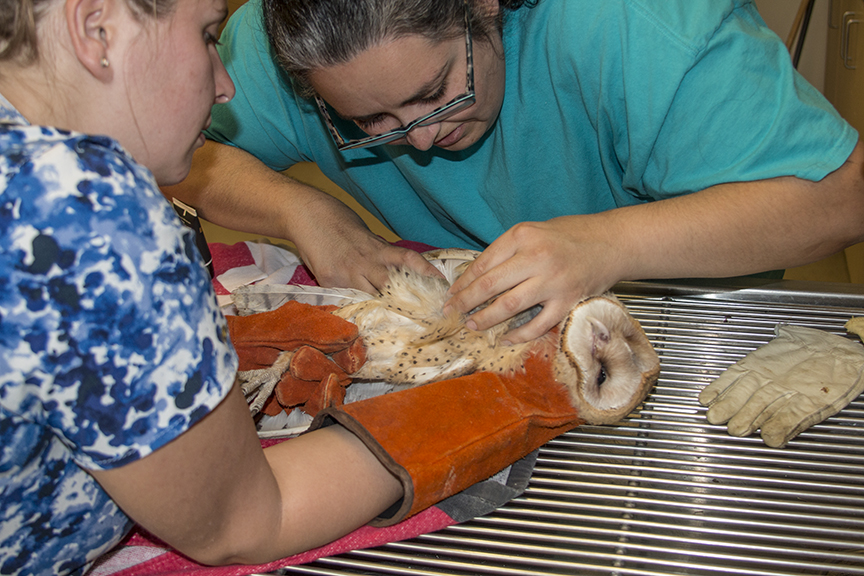
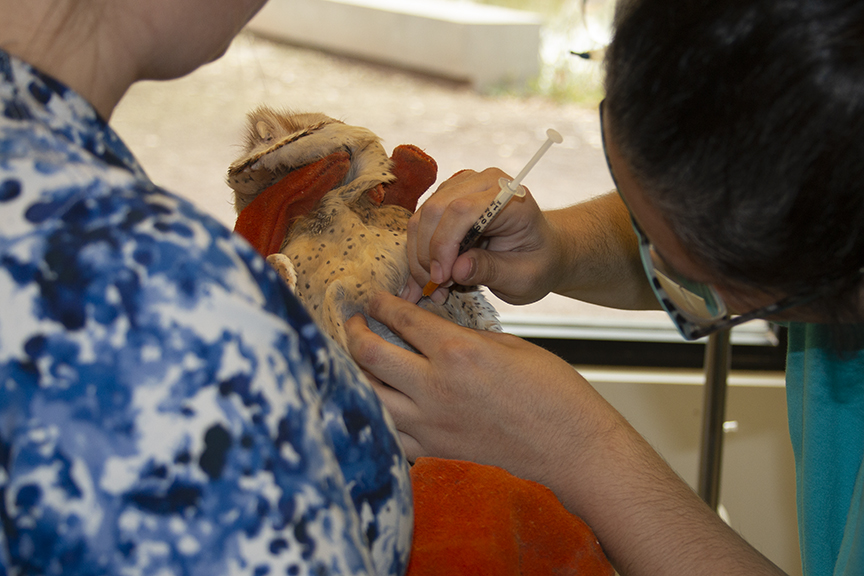

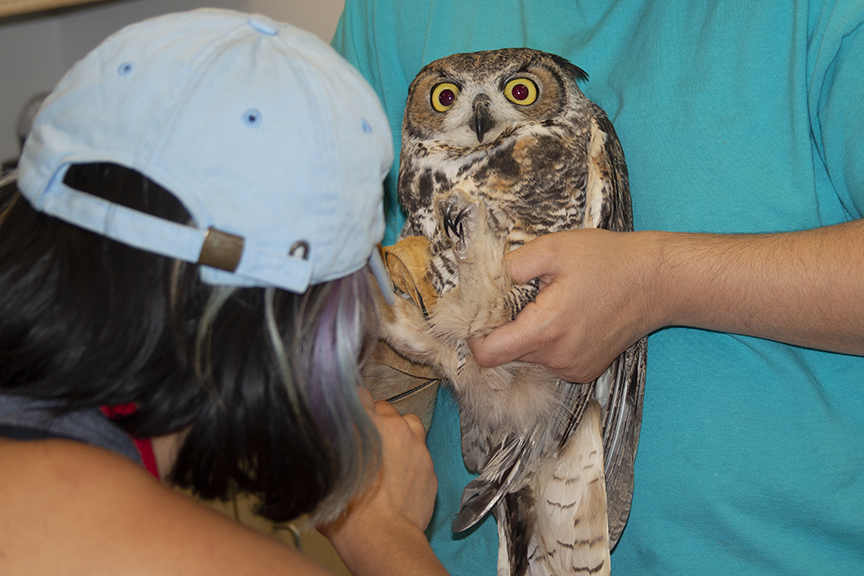
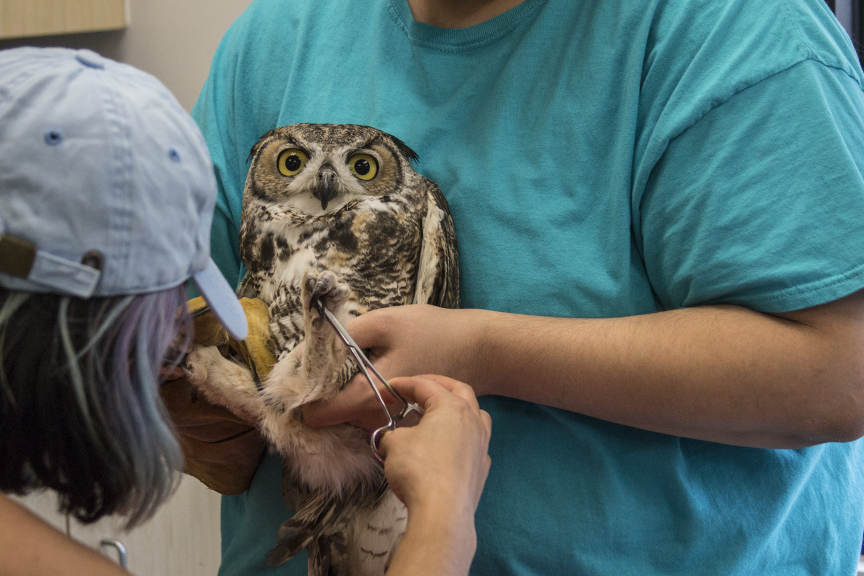

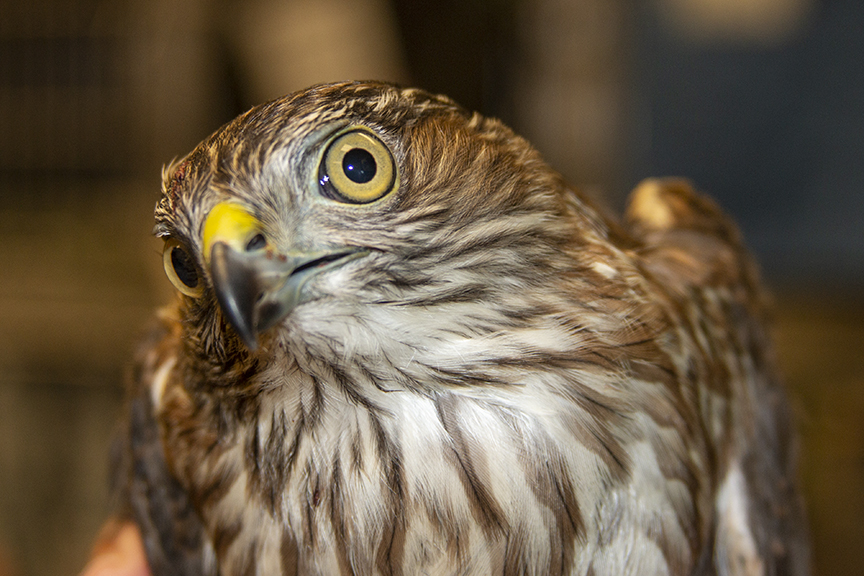
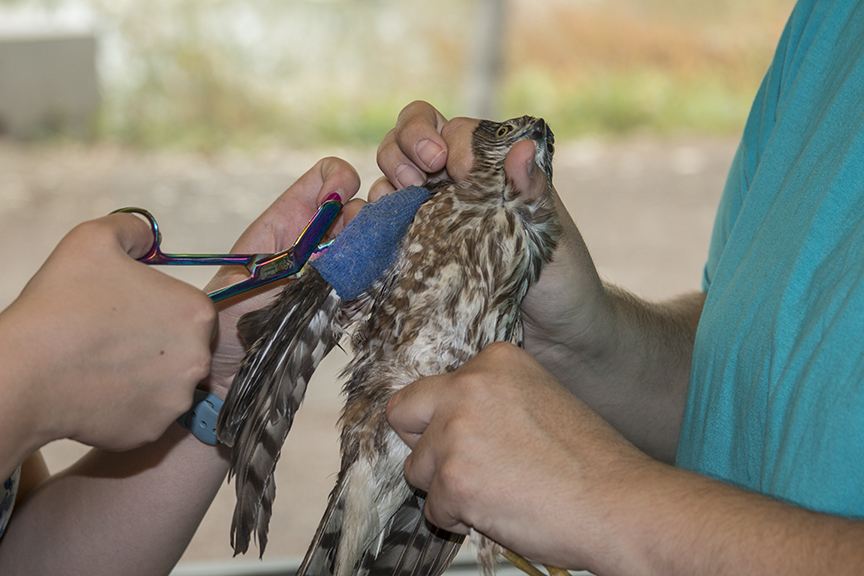
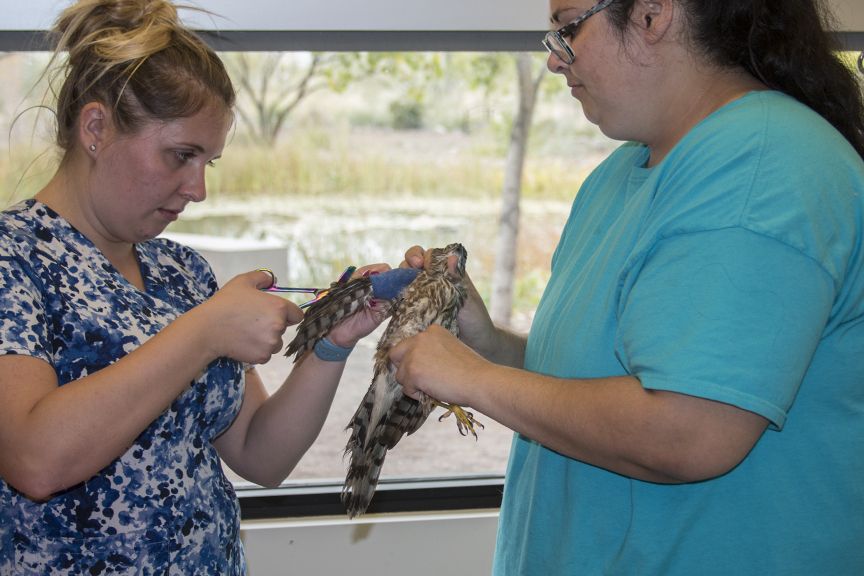


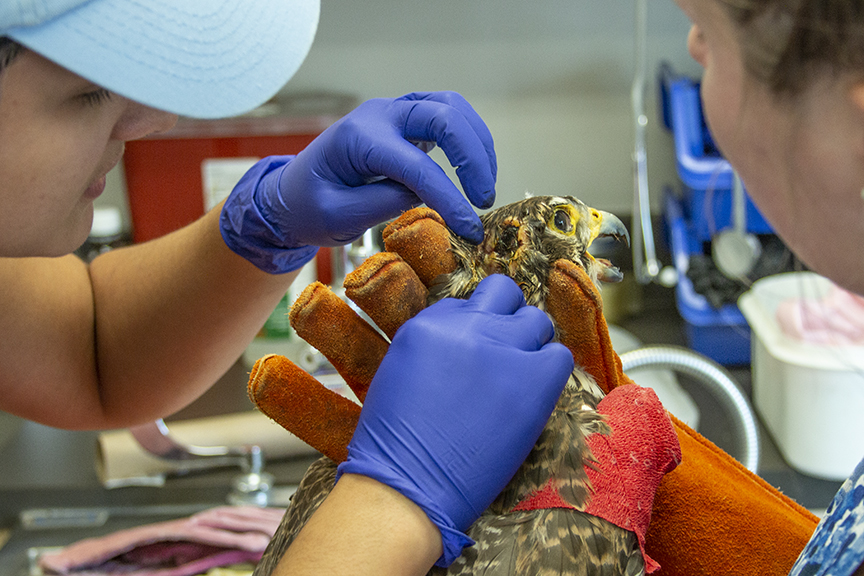
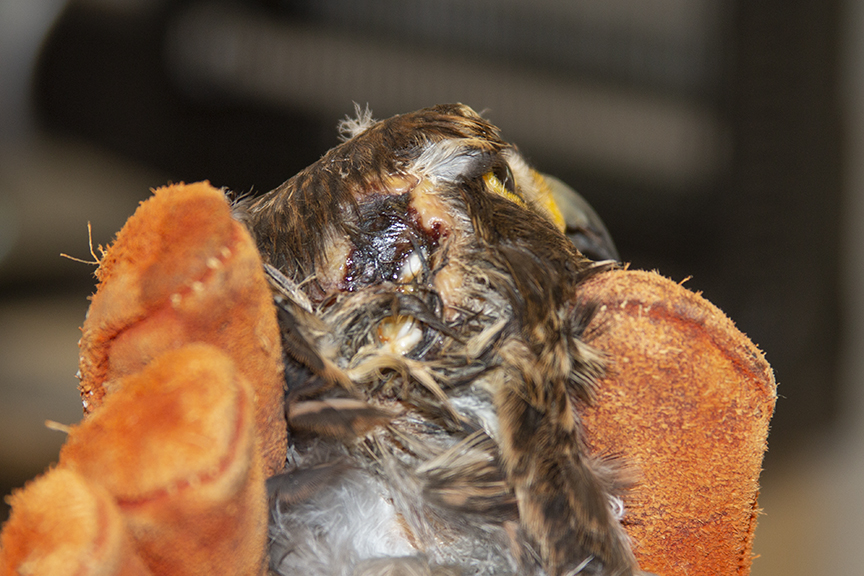
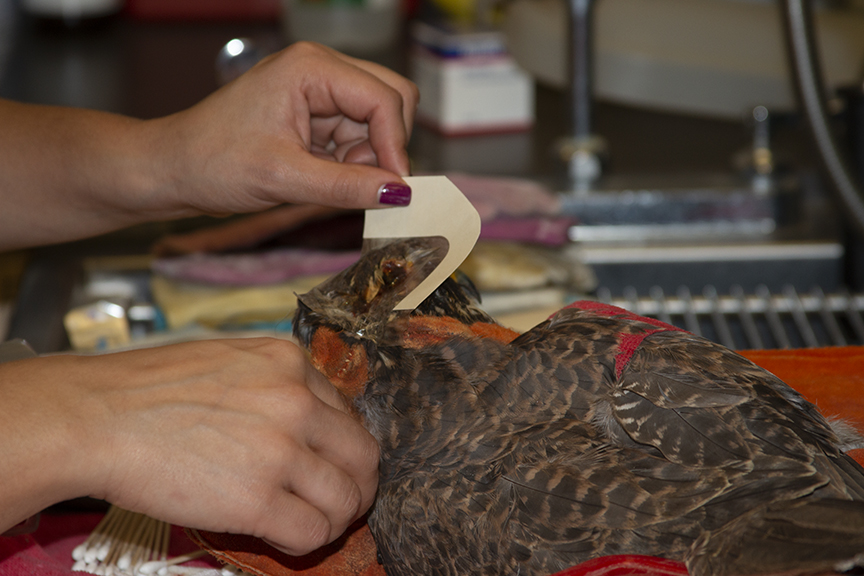
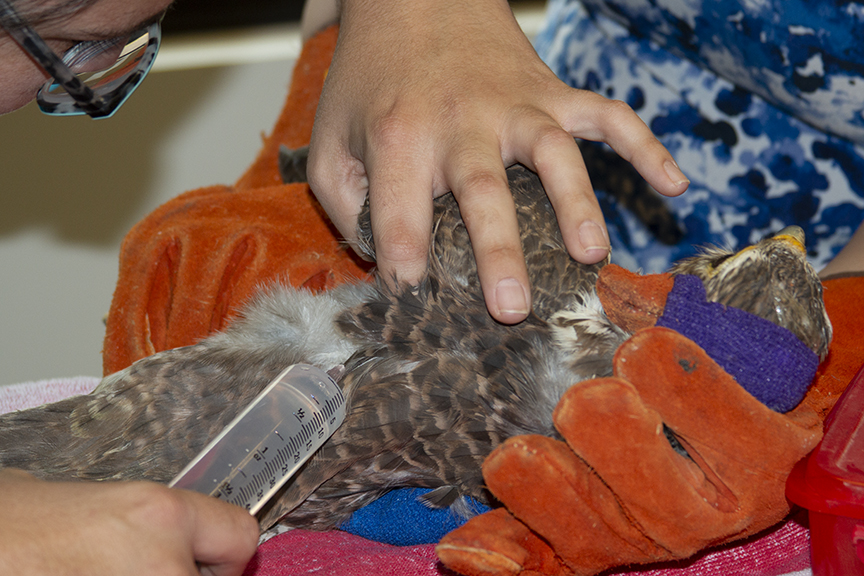



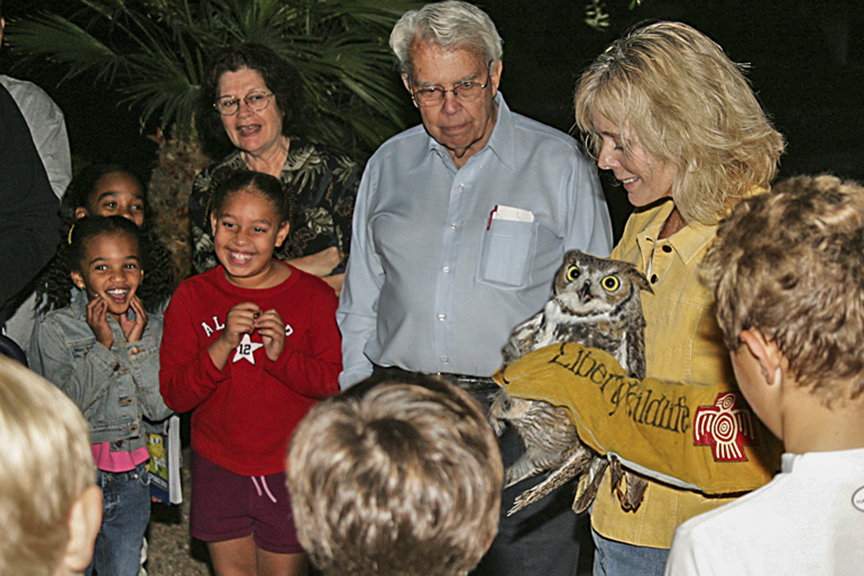
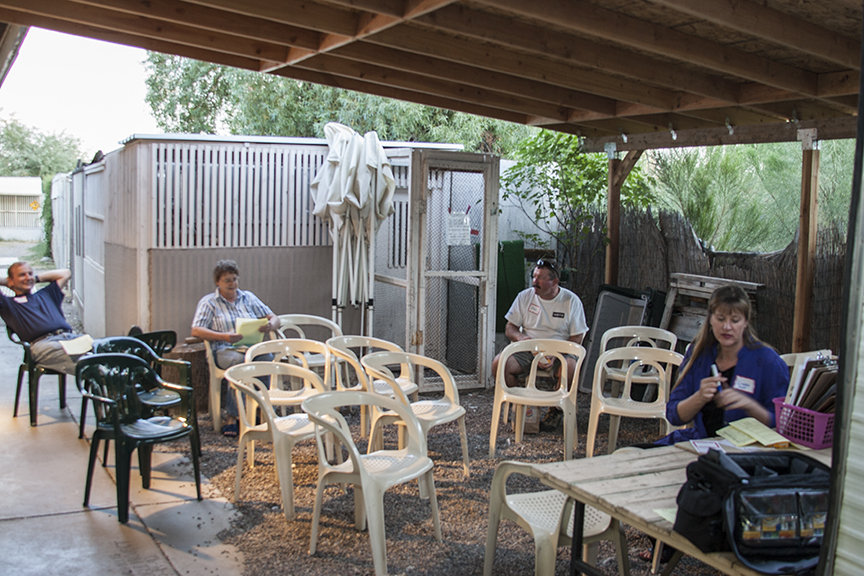

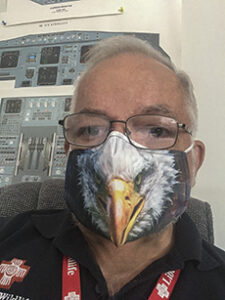
If only all “that water” were man made we would be in business.
“Predator and prey are alternate sides of the same coin in the game of life in the backyard bird world.” Well said, Terry! Understandably, it’s often a tough message for many to embrace.
Thanks for another great HHH, Megan, and your blog, Terry!